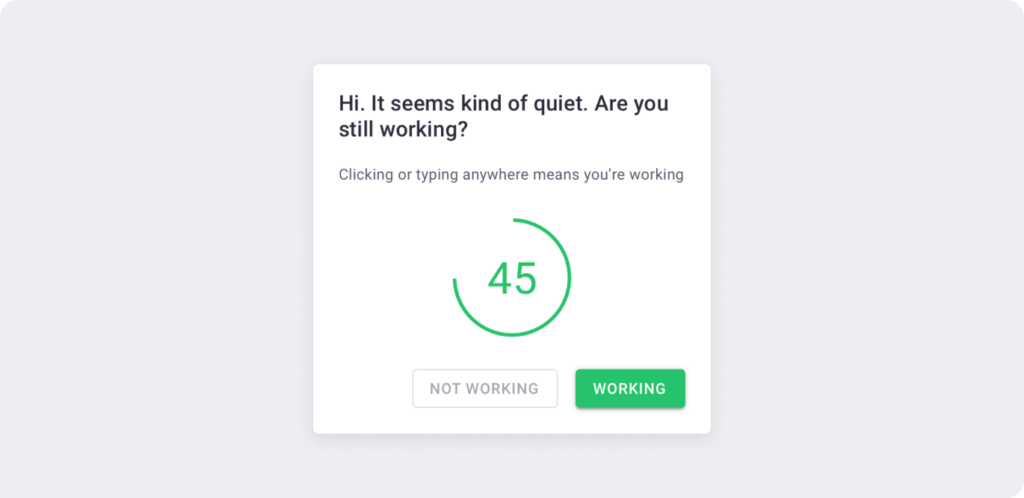Working remotely has brought unprecedented flexibility, but a new set of challenges has emerged, chiefly managing distractions. We will explore the different types of distraction employees face while working remotely and provide practical strategies for enhancing focus and productivity for both employees and leaders.
Identifying remote work distractions
Internal distractions
- Checking Emails: The constant urge to check emails can be a major internal distraction. Research suggests that interruptions every 6 minutes can lead to a whopping 23 minutes to regain focus.
- Multitasking: Juggling multiple tasks and frequently changing tasks can hinder productivity. Overcoming internal distractions requires a combination of effort, willpower, and the occasional break.
Solutions for internal distractions
- Honor your 1:1s: Encourage open communication in one-on-one meetings. Discussing personal matters fosters a sense of connection and helps alleviate internal distractions.
- Take time off: Recognize the importance of mental health. Offering mental health vacations allows employees to recharge and return to work with renewed focus.
- Mode behavior: Designate specific times for focused work. Use tools like Slack to signal when employees are in a concentration mode, reducing external interruptions.

External distractions
- Technological interruptions: Constant notifications from smartphones, emails, and social media can be a significant external distraction, pulling attention away from tasks at hand.
- Office environment: Open office layouts, while fostering collaboration, can also lead to increased levels of distraction due to conversations, phone calls, or other activities happening around the workspace.
- Visual distractions: Cluttered or visually stimulating environments can make it difficult to maintain focus. Intrusive visuals can compete for attention and reduce overall concentration.
- Meetings and interruptions: Frequent meetings or unexpected interruptions from colleagues can disrupt workflow and hinder the ability to maintain concentration on important tasks.
- Environmental factors: Uncomfortable temperatures, poor lighting, or uncomfortable seating arrangements can contribute to external distractions, making it challenging to concentrate on work.
- Personal devices: Co-workers using personal devices for non-work-related activities, such as watching videos or playing games, can create distractions for others in the same workspace.
- Inadequate tools and equipment: Lack of proper tools, equipment, or resources needed for a task can force individuals to divert attention to finding solutions, leading to decreased productivity.
- Surrounding activities: Events or activities in the vicinity, such as celebrations, construction work, or public demonstrations, can create disturbances and act as external distractions.
- Unpredictable events: Unexpected events, emergencies, or crises can disrupt the normal work routine and demand immediate attention, causing distractions from planned tasks.
Solutions for external distractions
- Operational distraction management: Implement coworking space allowances, designate meeting-free days, and establish communication rules (e.g., turning off Slack notifications) to create a conducive work environment.
- People-based distraction management: Invest in mental health support, career planning, and productivity training. Providing employees with the tools and skills to manage distractions is essential.
Understanding the impact of remote work distraction on productivity
Recognizing the detrimental effects of distractions on productivity is the first step toward finding solutions. Increased distraction can lead to missed deadlines, lower quality work, and employee burnout. Addressing these issues requires a holistic approach that considers both internal and external factors.
Learning strategies to minimize remote work distractions
Empower employees with strategies to minimize distractions. Encourage the use of productivity tools, establish clear boundaries between work and personal life, and foster a culture of accountability.
Recognizing the role of leadership in managing distraction
Leaders play a crucial role in creating a distraction-free work environment. By modeling focused behavior, providing necessary resources, and fostering a supportive culture, leaders can inspire their teams to stay on track.
Role of Time Doctor to avoid distraction

Time Doctor plays a crucial role in mitigating distractions and enhancing productivity in the realm of remote work. As a comprehensive time tracking and productivity analytics tool, Time Doctor empowers remote workers and their employers to gain valuable insights into how time is spent throughout the workday.
Its features include activity tracking, website and application monitoring, and idle time detection, providing a detailed breakdown of where time is allocated. By offering transparency and accountability, Time Doctor helps remote employees stay focused on their tasks and discourages potential distractions.
Moreover, it enables employers to identify patterns and trends in employee behavior, facilitating data-driven decisions to optimize workflows and address any underlying issues. With its ability to generate reports and analytics, Time Doctor fosters a culture of efficiency and discipline in remote work environments, ultimately contributing to enhanced productivity and the successful management of remote teams.
Conclusion
Successfully managing distractions in a remote work setting requires a multifaceted approach. By understanding and addressing both internal and external distractions, employees and leaders can create an environment that fosters focus, productivity, and overall well-being. Embracing tools like Time Doctor can further enhance the effectiveness of these strategies, helping individuals and teams thrive in the remote work landscape.

Carlo Borja is the Content Marketing Manager of Time Doctor, a workforce analytics software for distributed teams. He is a remote work advocate, a father and a coffee junkie.


